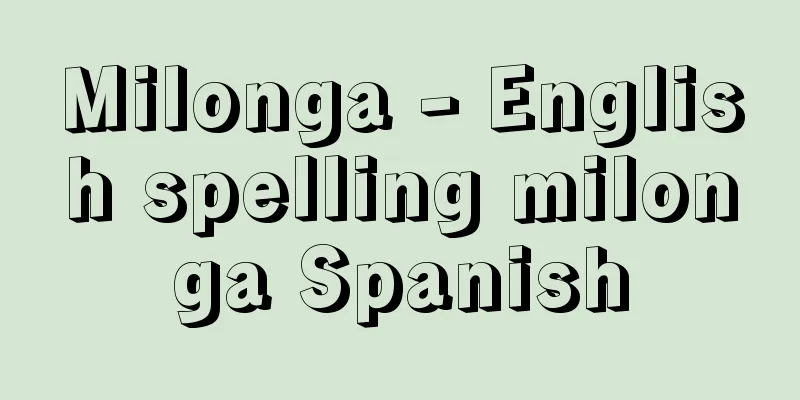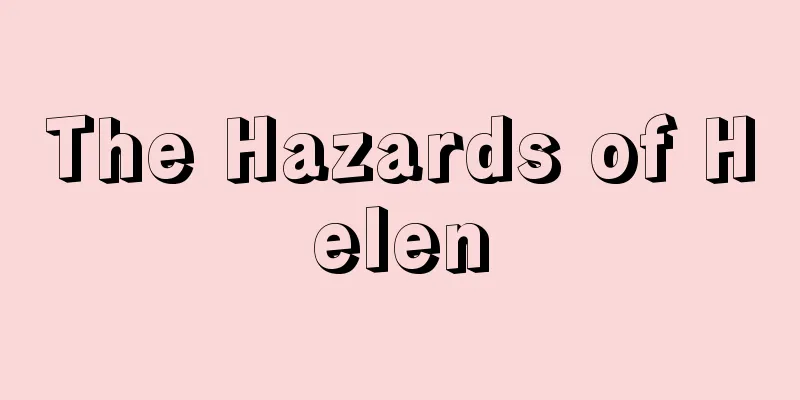Milonga - English spelling milonga Spanish

|
A 2/4 Argentine song or dance. It is said to have originated from the dance Habanera, which was brought from Cuba in the late 19th century. The version that was introduced to the Pampas (grasslands) became a lyric song sung by cowboys (for example, Atahualpa Yupanqui's "Swinging in the Oxcart" is in this form). On the other hand, the version performed in urban areas such as the downtown area of Buenos Aires developed into a dance with a powerful rhythm and fast tempo, and played a major role in the birth of tango. Milongas in urban areas fell into disuse for a time, but were revived in the 1930s when they were incorporated into the tango repertoire, resulting in famous songs such as "Milonga Sad" and "Milonga de la Nuit". [Ryuichi Tai] Source: Shogakukan Encyclopedia Nipponica About Encyclopedia Nipponica Information | Legend |
|
アルゼンチンの2/4拍子系の歌謡ないし舞曲。起源は、19世紀後半にキューバからもたらされた舞曲ハバネラにあるといわれている。パンパ(草原地帯)に伝わったものは、牧童の歌う叙情歌になった(たとえばアタワルパ・ユパンキの『牛車にゆられて』はこの形式によっている)。一方、ブエノス・アイレスの下町などの都市部で行われたものは、力強いリズムと速いテンポをもった舞曲として発達し、タンゴの誕生にも大いにかかわった。都市部のミロンガは一時廃れかかったが、1930年代にタンゴのレパートリーに組み込まれてリバイバルし、『悲しきミロンガ』『夜のミロンガ』などの名曲も生まれた。 [田井竜一] 出典 小学館 日本大百科全書(ニッポニカ)日本大百科全書(ニッポニカ)について 情報 | 凡例 |
<<: Potassium myronate - Potassium myronate
Recommend
Community regulation - Community regulation
In a village community, cultivation regulations ar...
Wilhelm Dilthey
German philosopher. Born November 19th in Wiesbad...
Amsterdam Exchange - Amsterdam Stock Exchange
… [European and American securities markets] The ...
Takydromus smaragdinus (English spelling)
… [Takahiro Matsui]. … *Some of the terminology t...
Secular acceleration
Also known as secular acceleration. A fluctuation ...
Bustle
A general term for a waistband used to exaggerate ...
Alaric [I] - Alaric
King of the Visigoths (reigned 395-410). He ravage...
Rangifer tarandus caribou (English spelling) Rangifer tarandus caribou
…Nomadic [Makoto Ogihara]. . . … *Some of the ter...
Active Center - Catalytic Center
A specific site on the surface of a solid catalys...
Uspensky, PD - Uspensky
...It included practices that freed the body and ...
Retirement allowance
A general term for monetary benefits paid by a co...
Monetaria annulus (English spelling)
…[Tadashige Nabe]. . … *Some of the terminology t...
Dosho - Dosho
Year of death: 10th March 4th of the Bunbu Era (3r...
Windyakke - Windyakke
→Anorak Source : Heibonsha Encyclopedia About MyPe...
Wasconia - Wasconia
…The province of Navarre is part of the former Ki...









